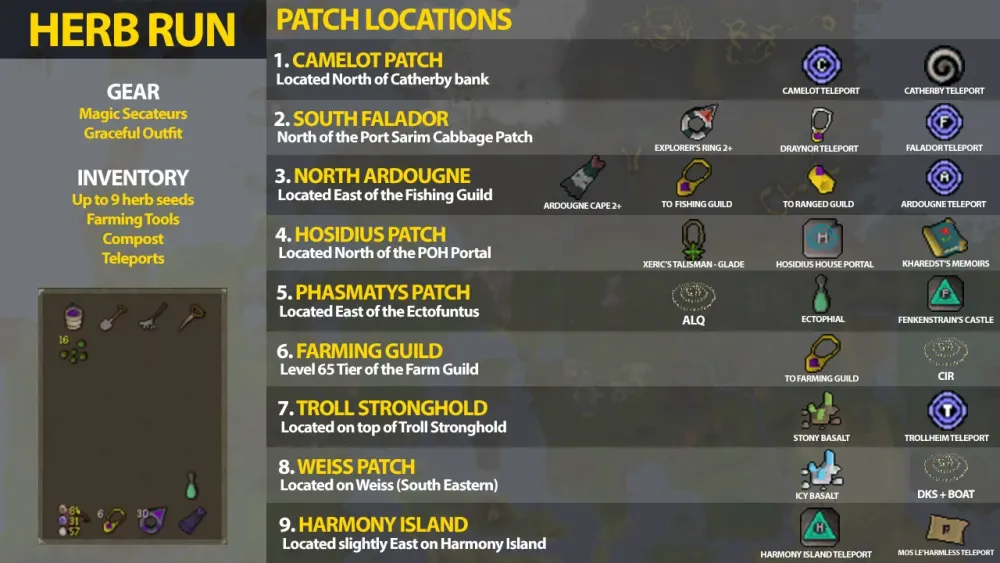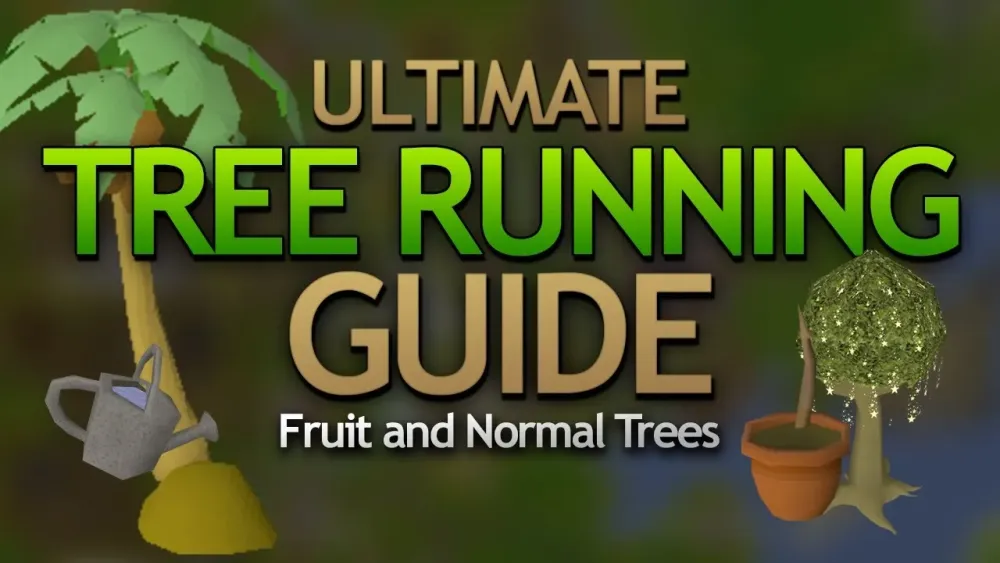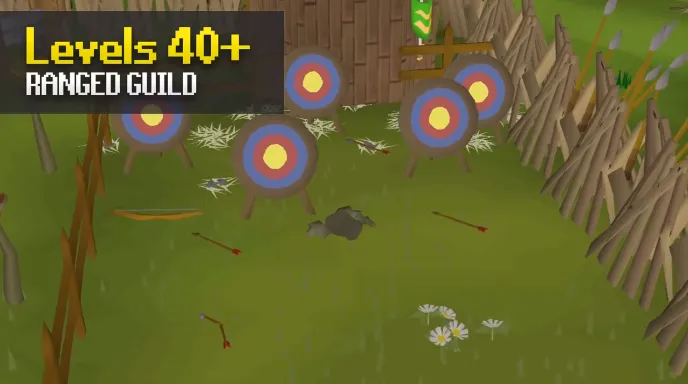Comprehensive OSRS Farming Guide by Theoatrix

Old School RuneScape (OSRS) offers a vast world of skills to master, and farming stands out as one of the most rewarding. This guide aims to provide a comprehensive overview of farming in OSRS, covering essential techniques, strategies, and tips to maximize your yield. Whether you’re a seasoned player or a newcomer, understanding the intricacies of farming can significantly enhance your gameplay experience and provide a steady source of income in the game.
Farming in OSRS is a skill that allows players to grow crops, herbs, and trees, providing valuable resources for various activities. To begin your farming journey, players must first acquire a spade, which can be purchased from various general stores or found in the farming guild. Starting with the basics, players can plant crops in patches located throughout Gielinor. The main types of patches include vegetable patches, herb patches, and tree patches, each serving different purposes and offering unique rewards.
To plant seeds, players must use them on the corresponding patch, ensuring they have the right level of farming to grow the desired crop. Each crop has a specific growth time, which can vary from minutes to hours. It’s crucial to check the growth status by interacting with the patch. Once the crops are fully grown, players can harvest them for experience points and items. Additionally, players can use compost on patches to improve yields and reduce the chance of disease.
As you progress in farming, you’ll unlock the ability to grow more advanced plants and trees. For example, after reaching level 15, players can start growing herbs, which are highly sought after for potion-making. Higher-level crops, such as fruit trees and special herbs, provide significant experience and financial rewards. Utilizing the Farming Guild and participating in farming contracts can further optimize your farming efficiency, allowing you to earn experience and rewards while growing crops for NPCs.
Another vital aspect of farming is the use of tools and equipment. Scarecrows can be placed in certain patches to protect crops from birds, while special items like the enchanted secateurs can increase yields when harvesting. Players can also benefit from planting multiple crops simultaneously in different patches, maximizing their farming output. By understanding the mechanics of farming and utilizing the available resources effectively, players can build a thriving farming operation, contributing significantly to their overall OSRS experience.
3. Essential Farming Tools and Supplies

When it comes to farming in Old School RuneScape (OSRS), having the right tools and supplies is crucial for a successful harvest. Here’s a rundown of the essential items you’ll need:
- Spade: This is your primary tool for digging and planting seeds. It’s a must-have for any farmer.
- Seed Dibber: Useful for planting seeds in flower patches. It’s not required for all crops, but it definitely comes in handy.
- Watering Can: Essential for watering your crops. Remember, some crops require more water than others!
- Rake: You’ll need this to clear the ground of weeds before planting your seeds. Weeds can hinder your crop growth.
- Farming Guild Access: Joining the Farming Guild can provide you with additional resources and perks, so consider getting that membership!
Additionally, you’ll want to stock up on some supplies:
| Supply | Purpose |
|---|---|
| Seeds | For planting various crops. |
| Compost | Improves crop yield and reduces disease. |
| Supercompost | Even better than regular compost for boosting growth. |
With these tools and supplies in hand, you’ll be well on your way to becoming a successful farmer in OSRS!
4. Growing Your First Crops: A Step-by-Step Guide

Ready to dig into farming? Growing your first crops in OSRS is not only rewarding but also a fun way to engage with the game. Follow this step-by-step guide to get started:
- Choose Your Location: Decide where you want to grow your crops. Common spots include the allotment patches in Varrock or Lumbridge.
- Clear the Patch: Use your rake to remove any weeds in your chosen patch. A clean patch is essential for planting.
- Plant Your Seeds: Grab your spade and right-click on the patch to plant your seeds. If you have a seed dibber, it can make this step easier for certain crops.
- Water Your Crops: Use your watering can to ensure your crops have enough moisture. Some crops need watering daily, so keep an eye on them!
- Protect Your Crops: Use compost or supercompost to enhance growth and reduce the chance of disease. This is crucial for a successful harvest.
- Check for Pests: Occasionally check your crops for disease or pests. If you spot any, use a plant cure or simply replant.
- Harvest: Once your crops are fully grown, it’s time to reap the rewards! Simply click on the patch to collect your produce.
Growing your first crops may seem daunting, but with patience and the right steps, you’ll be on your way to becoming a farming pro in OSRS!
5. Advanced Farming Techniques for Maximum Yield
When it comes to maximizing your yield in Old School RuneScape (OSRS), employing advanced farming techniques can make a significant difference. Here are some methods that can help you boost your farming efficiency and output:
- Crop Rotation: This involves alternating the types of crops you plant in a specific area. Different crops have varied growth requirements, and rotating them can prevent soil depletion and increase yield.
- Using Super Compost: Enhance your crop yield by using super compost. This not only boosts the growth rate but also protects your plants from diseases. You can create super compost by composting regular materials like fruits and vegetables.
- Planting in the Best Locations: Certain locations have bonuses that can improve your farming yield. For instance, using the Farming Guild or the various patches around Gielinor can provide you with better yields and faster growth times.
- Utilizing Special Seeds: Look out for seeds that provide higher yields, like the Magic Trees or the Dragonfruit. These can give you a significant return on your investment.
- Paying Attention to Weather Conditions: In-game weather can affect crop growth. Be sure to check the weather before planting to optimize your yield.
By implementing these advanced techniques, you can significantly improve your farming output and enjoy the fruits of your labor in OSRS.
6. Understanding Farming Experience and Levels
Farming experience (XP) in OSRS is crucial for leveling up your Farming skill, which in turn unlocks new crops, trees, and farming patches. Here’s a breakdown of what you need to know:
- Experience Points: You earn XP by planting, harvesting, and maintaining crops. Each action grants a different amount of experience based on the crop type.
- Farming Levels: Your Farming level determines what crops you can plant. The higher your level, the more advanced crops you can grow, leading to better yields and more profitable harvests.
- Farming Milestones: Reaching certain levels unlocks notable milestones, such as:
| Farming Level | Unlocks |
|---|---|
| 1 | Ability to plant potatoes and onions |
| 15 | Ability to plant sweetcorn |
| 30 | Ability to plant watermelon |
| 99 | Ability to plant magic trees and unlocks the Farming cape |
Understanding how to maximize your farming experience will help you reach these levels more efficiently. Focus on high-XP crops, and always keep an eye on the Farming contracts for additional experience opportunities.
7. Best Farming Locations and Strategies
When it comes to farming in Old School RuneScape (OSRS), location is key. Choosing the right spot can significantly impact your efficiency and profits. Here are some of the best farming locations along with effective strategies to maximize your yield.
- Falador Farm: This farm is popular for its proximity to a bank. It’s ideal for growing potatoes and strawberries due to the nearby bank deposit box.
- Hosidius House: Located in the Kourend area, Hosidius House is perfect for growing herbs. With a nearby bank and a Farming Guild, you can easily manage your crops.
- Tree Gnome Stronghold: Great for planting trees and fruit trees. The teleportation option makes it easy to check your trees regularly.
- Taverley Farm: A solid choice for cabbage, belladonna, and watermelon. The nearby bank makes it easy to gather your supplies.
- Prifddinas: Offers a variety of farming patches including flower and herb patches, plus the ability to use the Teleport to House spell for quick access.
To strategize effectively, consider the following:
| Crop Type | Growth Time | Profitability |
|---|---|---|
| Herbs | 1-2 hours | High |
| Fruit Trees | 16 hours | Very High |
| Vegetables | 30 minutes | Moderate |
Remember to use supercompost to increase your yield and protect your plants from disease. Happy farming!
8. Using Farming for Profit: Tips and Tricks
Farming is not just about producing crops; it can be a lucrative source of income in OSRS. Here are some tips and tricks to help you turn your farming endeavors into profit.
- Use the Right Tools: Always carry a seed dibber, trowel, and watering can. These tools speed up your planting process.
- Plant High-Value Crops: Focus on crops like herbs, especially Torstol and Snapdragon, which sell for significant amounts on the Grand Exchange.
- Participate in Farming Contracts: Engaging in farming contracts from the Farming Guild can yield high-value rewards, including seeds and farming experience.
- Utilize the Farming Guild: This location not only provides farming patches but also offers access to the herb sack, which helps in storing herbs for easy transportation.
- Farm Trees and Fruit Trees: These crops take longer to grow but yield high profits upon harvesting. Make sure to check your patches regularly.
Additionally, consider the following strategies for maximizing profit:
- Prioritize your farming tasks based on crop yield and growth time.
- Use teleportation methods to save time when checking your crops.
- Keep track of the market trends for seeds and produce.
With these tips and tricks, you can effectively use farming not just as a skill but as a reliable method for generating wealth in OSRS. Get planting!
Comprehensive OSRS Farming Guide by Theoatrix
Farming in Old School RuneScape (OSRS) is an essential skill that allows players to grow their own crops, herbs, and trees. This guide, inspired by Theoatrix’s expertise, covers everything from the basics to advanced techniques.
Getting Started with Farming
- Farming Level: Begin by unlocking the Farming skill, which requires a level of 1.
- Seeds: Obtain seeds through various methods like monster drops, treasure chests, or purchasing from shops.
- Farming Equipment: Equip a spade and a watering can for planting and nurturing crops.
Essential Farming Locations
| Location | Type of Crop | Farming Level Required |
|---|---|---|
| Draynor Village | Potatoes | 1 |
| Varrock | Tomatoes | 12 |
| Falador | Onions | 5 |
| Kandarin | Herbs | 26 |
Advanced Farming Techniques
- Herb Runs: Regularly check on herb patches for quick XP and profit.
- Tree Runs: Planting trees offers long-term benefits and experience.
- Contracts: Engage in farming contracts for additional rewards and challenges.
Utilizing these strategies will enhance your Farming skill, increase your efficiency, and ultimately lead to greater in-game success.
Conclusion: Mastering OSRS Farming requires dedication and a strategic approach, but with the right techniques and knowledge, players can reap substantial rewards and enjoy a fulfilling experience in Gielinor.
